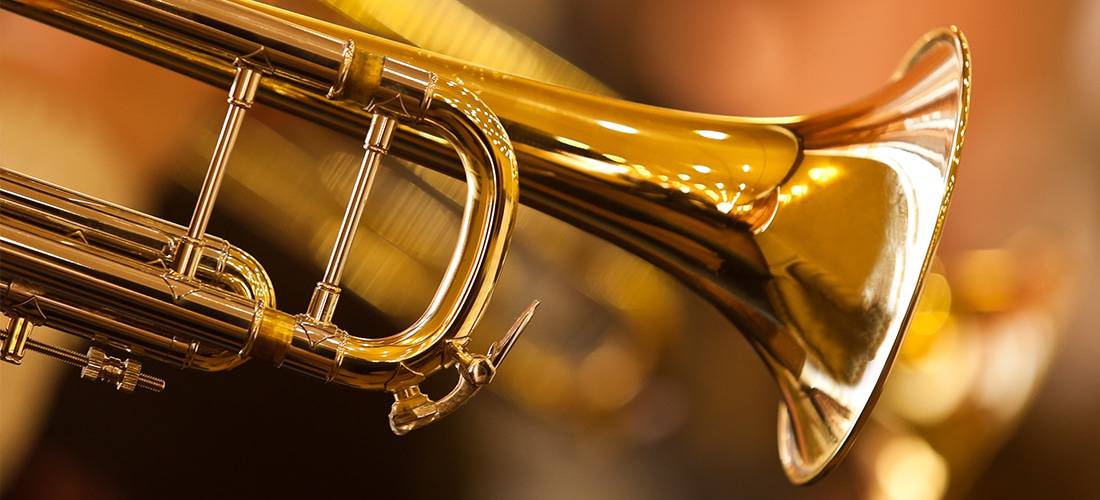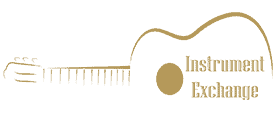Welcome to Chicago Instrument Exchange – Your Number One Source for Quality Used Trumpets – 630-879-2815 – Visit Us At 17 North River Street in Batavia

Used Trumpets
If you are looking for great deals on Used Trumpets we have plenty of instruments for you to choose from in all the leading brands! Additionally, we offer quality music lessons for horn players as well as instrument repair and cleaning. With more than 20 years of experience in serving musicians in the Fox Valley and throughout the suburban communities, we remain committed to sharing our expertise in musical instruments with our customers. We always have well-informed experts ready to help you – give us a call today with any questions you have or simply come see us – we’ll show you our fine selection of Used Trumpets so you can find the instrument that meets your needs. If you’re interested in lessons for Used Trumpets players we offer 30 minute lessons on nights or weekends for your convenience. All experience levels are welcome!
Quality Used Trumpets – Chicago Instrument Exchange
For musicians of any experience level who are interested in quality Used Trumpets, there are various things to consider. And even though it’s good to have choices it can be a challenging decision to make even for those players who do have some experience with a certain type of trumpet. To help you make an informed selection please take a quick look at the helpful information we’ve put together for you on this page.
Different Types of Used Trumpets
Trumpets are manufactured in many different keys: including low F, B-flat, C, D, E-flat, E, F, G and A.
The B-flat trumpet is the most commonly used horn and is what most students tend to start with. The C trumpet is another type of horn that’s commonly used as well. It features shorter tuning slides and emits a somewhat brighter sound than the B-flat, which makes it the horn of choice for many who perform with orchestras. The distinctions between these instruments are fairly subtle and can be hard to identify for some.
Used Trumpets – The Basics
Before narrowing down Used Trumpets that would be the best choice for you or the musicians in your life, it’s useful to be aware of the key components of this wonderful instrument that enable it to produce its special sounds:
The Bore: this is the interior diameter of the trumpet’s tubing, which is measured from the second valve slide. Most trumpet players prefer a bore that measures between .458″ to .460″. Trumpets that have larger bores can be played with extra power, but need more effort and are generally used by advanced musicians. For those newer to the instrument, a horn with a smaller bore is the more appropriate option simply because with a smaller bore it’s easier to produce a good tone.
The Mouthpipe: a mouthpipe is the tubing which goes from the trumpet’s mouthpiece to its main tuning slide. The mouthpipe can be manufactured from red brass, yellow brass or from sterling silver. Red brass is frequently favored by student trumpet players since it’s less subject to rust and requires less frequent cleaning.
The Rest
The Valves: also called the valve pistons, which are made from a variety of metals. Nickel-plated valves are typically found in student trumpets for their durability. Stainless steel valve pistons are another type of metal found in Used Trumpets which are often favored by intermediate or advanced players. Ask our helpful staff for more information about the other kinds of metal used in different kinds of trumpets. The essential factor to consider is that the valves should play easily and efficiently.
The Bell: like valves, the materials used in the manufacture of the bell also varies. Yellow brass is often the most commonly used, along with rose brass bells for their warm, dark tonal qualities. Silver bells are not as common and are usually found in higher-grade horns. Nickel plate is another horn finish that was once common but is now more rarely used.
Perhaps even more crucial than the bell’s material is how it is made. The top quality bells are one piece that are hammered by hand into the correct shape with use of a mold by a qualified craftsman.
Student usually have two-piece welded bells, rather than the one-piece bells on professional grade horns. In recent times the method of plasma welding has enabled two-piece bells to sound similar to one-piece bells and are sometimes a good choice for intermediate players. Trumpet bells also differ in size and taper, each of which can impact the sound of the musical instrument in refined ways.
The Different Finishes of Used Trumpets: they usually feature a clear lacquer finish over a brass surface, while another finish is silver plate. Viewed by some as better quality that lacquer due to its thinner coating when compared with lacquer, silver plate permits the metal’s molecules to vibrate more and emit a brighter tone.
What Are Trumpets Made Of?
Trumpets are made of brass tubing that’s shaped twice into a circular oblong shape. Like all brass instruments, the sound that emits from Used Trumpets is generated when the player directs air through closed lips in a “buzzing” sound straight into the mouthpiece. This starts a wave vibration within the air column inside the instrument. The player can choose the pitch from a range of different overtones or harmonics by altering the lip aperture and tension. The mouthpiece of the instrument is made with a round rim that provides a comfortable opening for the vibration of the player’s lips. Right behind the rim is a cup that routes the air into a small opening that tapers out to match up with the dimension of the trumpet’s main pipe. The dimensions of these components of the mouthpiece impact the sound quality, ease of playability and the player’s comfort. Typically, the deeper and wider the cup the “darker” the trumpet’s sound. Contemporary Used Trumpets typically have three or sometime four valves. Each valve increases the length of the instrument’s tubing, which lowers the pitch.
Lower The Pitch
The first valve serves to lower the pitch by a whole step, the second by a half step and the third valve lowers the pitch by one and a half steps. With instruments that are made with a fourth valve – such as with a piccolo trumpet – it lowers the pitch down by a fourth. When used individually or conjunction, the valves make the trumpet completely chromatic – which means it can play all 12 pitches of classical music. The pitch of Used Trumpets can be lowered or raised with the use of the tuning slide. When the slide is pulled outward, the pitch is lowered; conversely, the slide raises the pitch when pushed inward. A trumpet basically becomes a closed-off tube when the player applies it to their lips. The instrument naturally makes every other overtone in the harmonic series. The contour of the instrument’s bell enables missing overtones to be audible. Contemporary Used Trumpets are made with slide mechanisms for their first and third valves, allowing the player to use their left thumb and left ring finger to press them.
At Chicago Instrument Exchange, we stock a great variety of Used Trumpets – visit our store and our staff will help you select a horn that’s just right for your experience level and musical ambitions!
